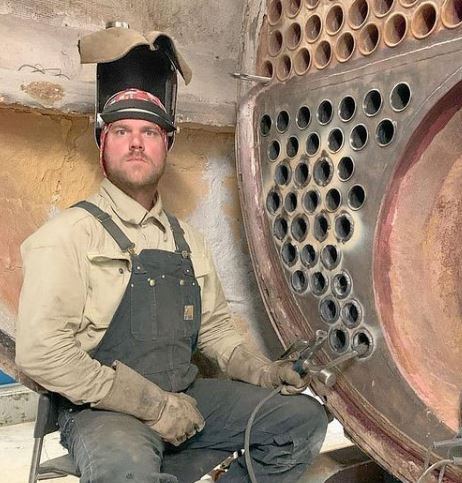Tig welding is a highly specialized type of welding that is used in a variety of industrial applications. It is a very precise and precise process, as it uses a tungsten electrode, much smaller than most traditional welding rods. Tig welding requires a high skill level, which is more difficult than other welding processes. This is because it requires great focus, precision, and control. Additionally, Tig welders require special equipment, such as torches and welding rods, which can be expensive. Due to these aspects, Tig welding is typically considered more difficult than Mig welding, another welding process. Mig welding is quicker and simpler than Tig welding but produces different strong and precise welds. While Tig welding is more complex and time-consuming, it produces stronger bonds and is often used in the construction and automotive industries.
Tig welding is a precise and advanced form of welding that requires a high level of skill and experience. The welding process is usually done with a tungsten electrode and requires great focus, precision, and control. This welding process is often used in construction and automotive industries because of the strong and precise welds it can produce. Mig welding, on the other hand, is quicker and simpler than Tig welding but usually produces a different quality of welds. Therefore, it is generally accepted that Tig welding is more difficult than Mig welding.

Factors That Influence the Difficulty of Tig Welding
Several factors can influence the difficulty of TIG welding:
- The complexity of the process: TIG welding requires greater skill and precision than other welding processes because the welder must manually control the heat and filler material. This can make TIG welding more difficult for those new to welding or needing more training.
- Required hand-eye coordination: TIG welding requires good hand-eye coordination because the welder must manipulate the tungsten electrode and filler material while controlling the heat with the other hand. This can be challenging for some people, especially if they are not used to working with their hands.
- Need for precise control of the heat and filler material: TIG welding requires precise control of the heat and filler material to produce high-quality welds. The welder must be able to adjust the heat and filler material based on the thickness and type of metal being welded, as well as the size and shape of the joint. This can be difficult for those who are not experienced in TIG welding.
TIG welding can be more challenging than other welding processes due to the greater skill and precision required. However, with proper training and practice, anyone can learn to TIG weld and become proficient.
Factors That Influence the Difficulty of Mig Welding
Several factors can influence the difficulty of MIG welding:
- The simplicity of the process: MIG welding is generally considered easier to learn than other welding processes because it is more straightforward. The welder does not need to manually control the heat or filler material, as the welding machine automatically provides these.
- Limited need for precise control of the heat and filler material: MIG welding requires less precise control of the heat and filler material than TIG welding. The welder must hold the gun at the right angle and maintain the correct distance from the workpiece.
Overall, MIG welding is generally considered less difficult than TIG welding due to the simplicity of the process and the limited need for precise control of the heat and filler material. However, MIG welding still requires a certain level of skill and proficiency, and it can be challenging for those new to welding or who need more training.
Comparison of Tig and Mig Welding in Terms of Difficulty
TIG and MIG welding are effective methods for joining metal, but they can be perceived as having different difficulty levels.
TIG welding is generally more difficult than MIG welding due to the greater skill and precision required. The welder must manually control the heat and filler material, which can be challenging for those new to welding or without sufficient training. TIG welding requires good hand-eye coordination and precise heat and filler material control to produce high-quality welds.
On the other hand, MIG welding is generally considered easier than TIG welding due to the simplicity of the process and the limited need for precise control of the heat and filler material. The welder does not need to manually control the heat or filler material, as the welding machine automatically provides these. MIG welding is also known for being fast and efficient, making it suitable for high-volume welding.
Overall, both TIG and MIG welding can be challenging, but TIG welding may require higher skill and precision. The difficulty of either process can be reduced with proper training and practice.
Conclusion
In conclusion, TIG and MIG welding are effective methods for joining metal, but they can be perceived as having different difficulty levels. TIG welding is generally more difficult due to the greater skill and precision required. In contrast, MIG welding is generally considered easier due to the simplicity of the process and the limited need for precise control of the heat and filler material. However, both TIG and MIG welding can be challenging, and the difficulty of either process can be reduced with proper training and practice. Ultimately, the choice between TIG and MIG welding will depend on the specific needs and preferences of the welder and the project at hand.

It’s been years since I got into welding as a side hustle. It’s been so long since Doing All kinds of welds for business and pleasure as this is my hobby. Being in this field I have learned from hands-on-experience also came to know what gears work and what doesn’t. The Tig Welder is my own platform where I use to share my experience.






Leave a Reply